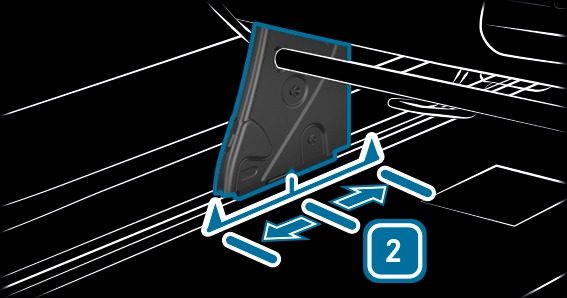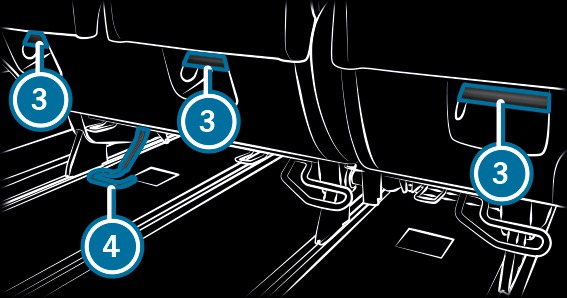When adjusting a rear bench seat, you or another vehicle occupant could become trapped by the guide rail of the rear bench seat, for example.
If you move the rear bench seat while driving, the seat may move in an unexpected or jerking manner, for instance when braking.
You could become trapped as well as thrown against parts of the vehicle or other vehicle occupants.
If you move the seat position outside the marked area, the window airbag can no longer provide optimum protection.
The protective effect of the window airbag is gradually reduced and may in some positions no longer be provided at all.
If you move the rear seats or the rear bench seat outside the markings on the guide rail, this could result in the passenger striking their head on the seat.
The vehicle is equipped with a seat rail system in the vehicle floor.

Maintain a minimum clearance of 5 cm between the knees of the vehicle occupants and the seat in front of them.
between the knees of the vehicle occupants and the seat in front of them.

Starting from the basic setting  , the rear bench seat for passengers can be moved forwards or backwards by 5 cm. In doing so, make sure that passengers have sufficient legroom to reduce the risk of injury during braking.
, the rear bench seat for passengers can be moved forwards or backwards by 5 cm. In doing so, make sure that passengers have sufficient legroom to reduce the risk of injury during braking.

You can slide the rear bench seat only when it is unoccupied. If possible, slide the rear bench seat with the assistance of a second person.
 for seat fore-and-aft adjustment.
for seat fore-and-aft adjustment.  .
.  .
. The release handle  folds down to its original position.
folds down to its original position.
The rear bench seat can no longer be moved.

